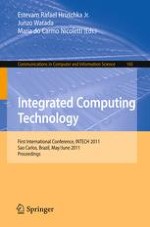2011 | Buch
Integrated Computing Technology
First International Conference, INTECH 2011, Sao Carlos, Brazil, May 31 – June 2, 2011. Proceedings
herausgegeben von: Estevam Rafael Hruschka Jr., Junzo Watada, Maria do Carmo Nicoletti
Verlag: Springer Berlin Heidelberg
Buchreihe : Communications in Computer and Information Science
